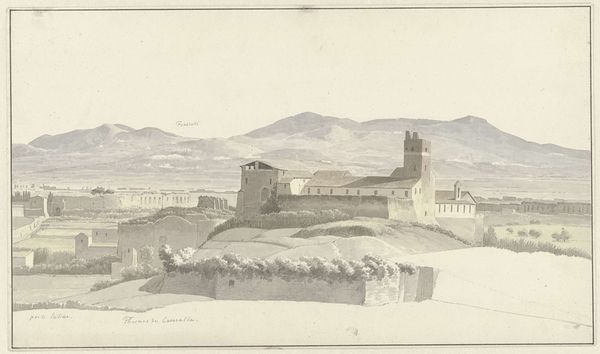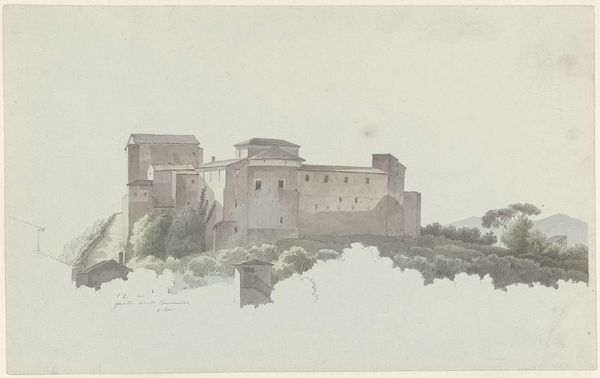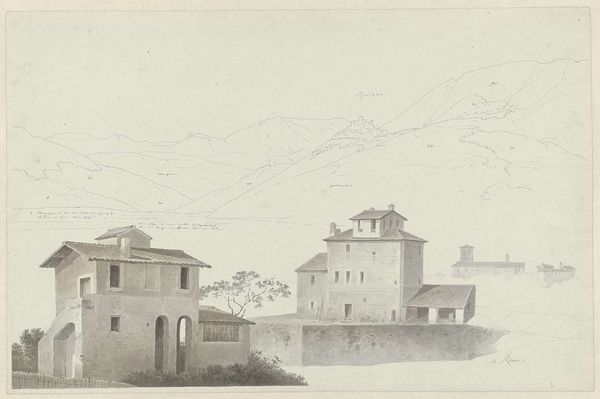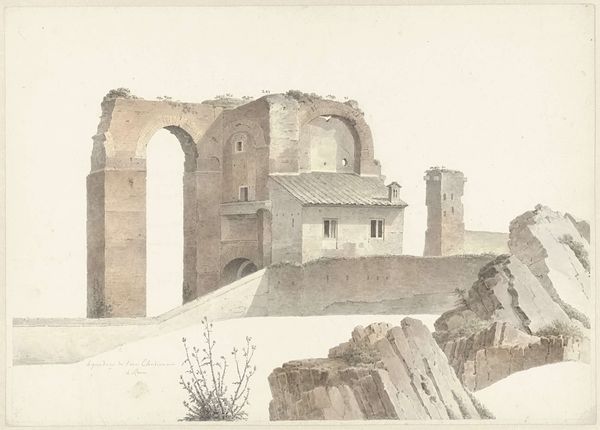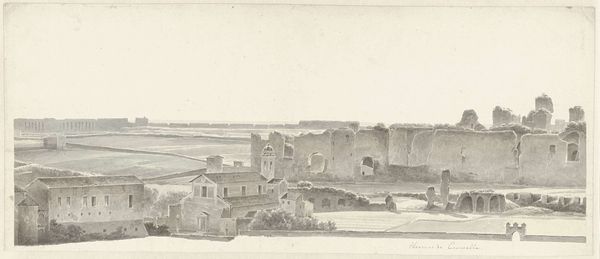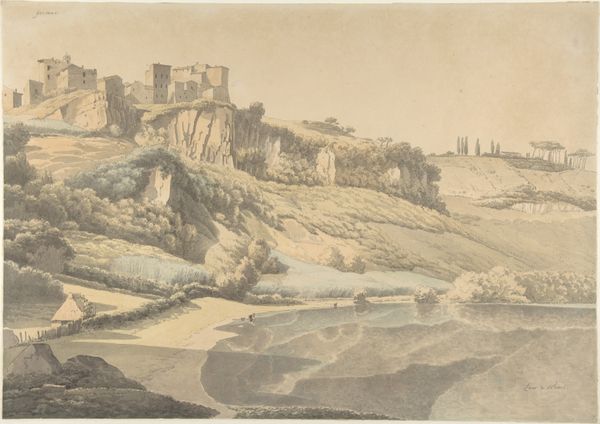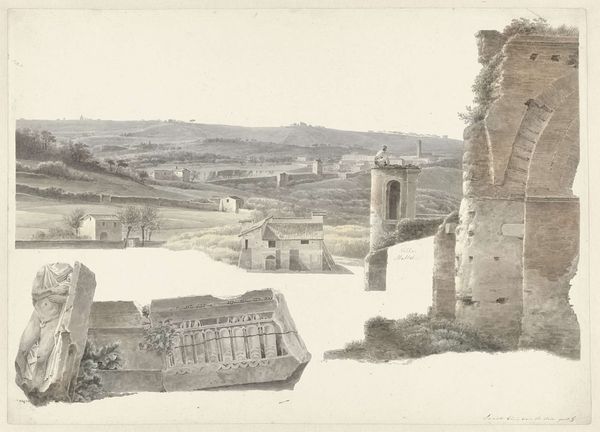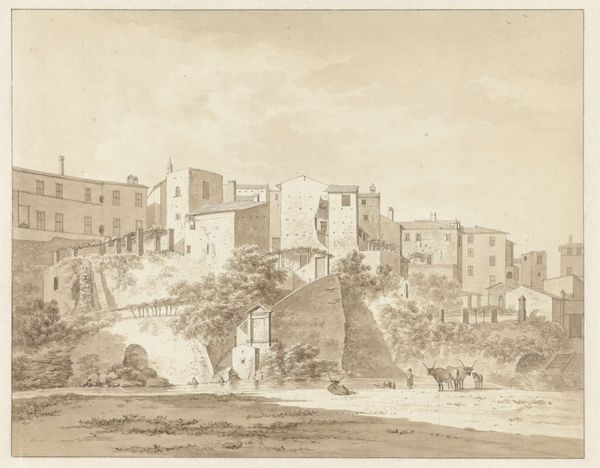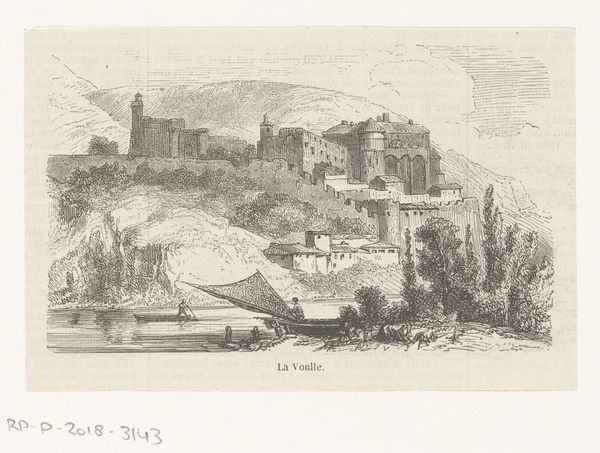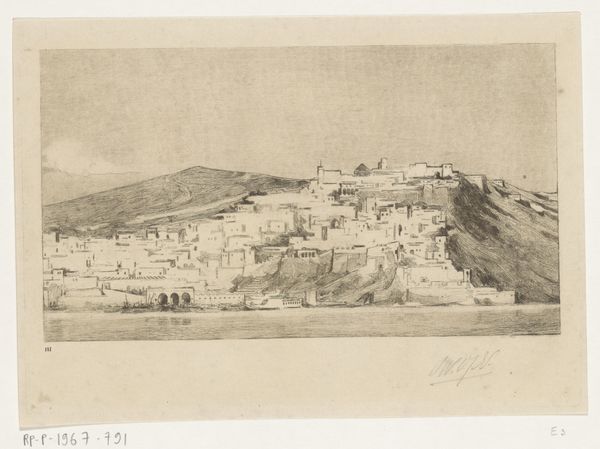
Santa Sabina on the Aventine Hill and Sant’Agnese fuori le Mura and Santa Costanza in Rome c. 1809 - 1812
0:00
0:00
drawing, watercolor, ink
#
drawing
#
neoclacissism
#
landscape
#
watercolor
#
ink
#
romanticism
#
cityscape
#
history-painting
Dimensions: height 419 mm, width 588 mm
Copyright: Rijks Museum: Open Domain
Josephus Augustus Knip created this watercolor, "Santa Sabina on the Aventine Hill and Sant’Agnese fuori le Mura and Santa Costanza in Rome," to capture Rome's architectural relics. Knip painted this after the French Revolution and Napoleonic wars, a period when the rise of Neoclassicism in art and architecture coincided with renewed interest in classical history. The placement of these three iconic churches highlights different aspects of the city's identity. Santa Sabina, the oldest of the three, reminds us of the early expansion of Christianity throughout the Roman Empire. Sant’Agnese fuori le Mura, dedicated to Saint Agnes, emphasizes stories of female strength and religious devotion. Lastly, Santa Costanza, originally a mausoleum, showcases the grandeur and adaptability of Roman architecture through the ages. Knip’s subtle watercolors evoke a sense of nostalgia and reverence for a bygone era. Through his art, Knip invites us to reflect on the layers of history and memory embedded in the urban landscape.
Comments
rijksmuseum about 2 years ago
⋮
The vignette at the top of this drawing shows the basilica of Santa Sabina and the surrounding buildings with the Aventine Hill rising in the background. Below is one of Rome’s greatest sights, with the church of Sant’Agnese fuori le Mura at left, the remains of the Basilica Constantiniana – originally a covered mausoleum – at center and the church of Santa Costanza at right.
Join the conversation
Join millions of artists and users on Artera today and experience the ultimate creative platform.
